The Heavy Jet Section
Discover our partner Legacy
Legacy understands that the primary drivers for private aviation are maximizing time and control. Business leaders and Ultra-High Net Worth private travelers need to get the most out of every minute and have the ability to control their travel schedule as simply and efficiently as possible.
Legacy’s world-class concierge program coupled with the power of the Nomad Hill travel platform allow clients to effect changes to their complex travel itineraries (aircraft schedule, hotel bookings, ground transportation services, VIP arrangements) all though a single point of reference affording even the most exacting client the power to control their schedule and react to opportunity in today’s fast-paced global environment.
Legacy Aviation Group has developed one of the most comprehensive Flight Card Programs in the industry, allowing our clients unmatched accessibility to a multitude of new aircraft. We are dedicated to providing you with flexibility and enjoy private jet travel without the additional fees and burdens found with our competitor card programs.
Aircraft safety is always our primary focus and never sacrificed. All aircraft maintain the highest rankings on all 12 ARG/US Platinum safety-rating categories. We believe that safety is primordial in the business jet travel industry.
Find the jet that fits your needs below.

CHALLENGER 850
Discover the CHALLENGER 850
The Challenger 600 series of aircraft originated in 1976 from a concept that the founder of Learjet, Bill Lear, presented to Canadair called the LearStar 600. Canadair was the original builder of the Challenger series of aircraft before Bombardier purchased Canadair.
The Challenger 850 is a re-badged Challenger 800 based on the Regional Jetliner CRJ 200, which in turn was developed from the Canadair Challenger 600 model. The aircraft is powered by two GE CF34-3B1 engines. In commercial service, the CRJ have accumulated over 6 million flight hours. The CL850 represents lessons learned from both the early CRJ aircraft and the business Challenger 600/601/604 series.
The aircraft, in business service, allow for customized interiors. The cabin width exceeds eight feet and it has a flat floor with true stand up room. Seating can range from 18 in executive configuration, to 30 in first class shuttle configuration. Range varies with payload and is between 2,600 NM to nearly 3,200 NM with reserves. The main difference between the CL850LR, the CL850 and the CL850CS is the amount of fuel installed in the aircraft.
Passengers: 14
Range: 2,456 nautical miles
Cabin Dimensions: 2,416 cubic feet
Speed: 425 MPH
Cargo Capacity: 202 cubic feet



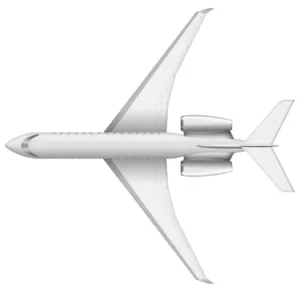

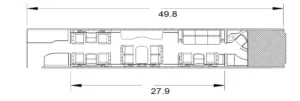


FALCON 900EX EASY
Discover the FALCON 900EX EASY
Dassault Falcon 900EX EASy
The Falcon 900EX is a Falcon 900C with higher rated Honeywell TFE 731-60 engines that produce 5,000 pounds of thrust and 700 NM more range.
The Falcon 900EX EASy is a Falcon 900EX with the Honeywell designed EASy cockpit. EASy represents progress toward a virtually paperless cockpit. Goals of the EASy cockpit are improved situational awareness and reduced cockpit workload. The EASy cockpit is based somewhat on the hardware platform of Honeywell’s Primus Epic system.
The EASy cockpit has four 14.1-inch Primus Epic screens that can display all information from aircraft sensors affecting systems, communications, navigation, and flight management.
The Falcon 900EX EASy received its certification in 2005.
Passengers: 12
Range: 4,500 nautical miles
Cabin Dimensions: 1,862 cubic feet
Speed: 459 MPH
Cargo Capacity: 127 cubic feet



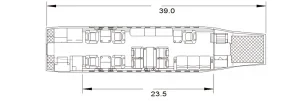

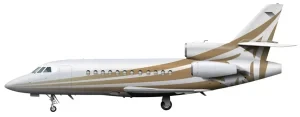
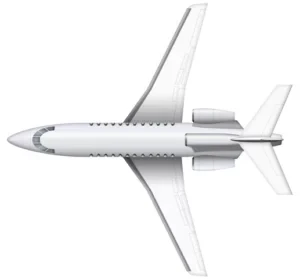


FALCON 900LX
Discover the FALCON 900LX
The Falcon 900LX is a Falcon 900EX EASy with Aviation Partners (API) winglets. The winglets reduce drag by as much as 7% allowing a range of 4,800 miles. Climb performance is improved by 10% over the previous version. The new winglets will be available for retrofit onto earlier model Falcon 900’s.
Avionics on the Falcon 900LX is the EASy flight deck. EASy represents progress toward a virtually paperless cockpit. Goals of the EASy cockpit are improved situational awareness and reduced cockpit workload. The EASy cockpit is based somewhat on the hardware platform of Honeywell’s Primus Epic system.
The EASy cockpit has four 14.1-inch Primus Epic screens that can display all information from aircraft sensors affecting systems, communications, navigation, and flight management.
Power comes from three Honeywell TFE731-60 engines producing 5,000 pounds of thrust each.
Passengers: 12
Range: 4,800 nautical miles
Cabin Dimensions: 1,862 cubic feet
Speed: 425 MPH
Cargo Capacity: 127 cubic feet
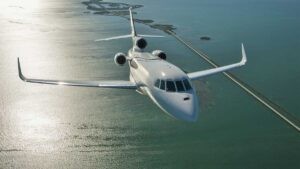






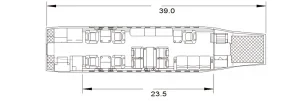
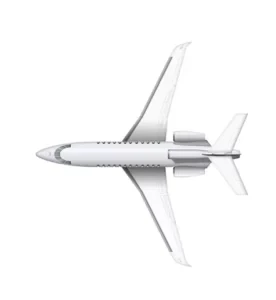
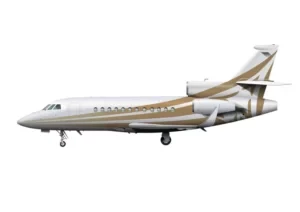

GLOBAL 5000
Discover the GLOBAL 5000
Bombardier Global 5000
The Global 5000 is a slightly smaller version of the Global Express. It has a range of 5,200 NM. Although the fuselage is five feet shorter than the Global Express, its available passenger seating area (separate from the galley and lavatory) will be about the same. Two Rolls Royce Deutschland BR710A2 engines of 14,750 lbs thrust, power the aircraft.
Other than the maximum range, performance is similar to the Global Express. The Global 5000 is slotted in between the Challenger 604 and Global Express in size and price.
First flight took place in 2003 with deliveries commencing in 2004.
Passengers: 14
Range: 5,200 nautical miles
Cabin Dimensions: 2,286 cubic feet
Speed: 505 MPH
Cargo Capacity: 195 cubic feet


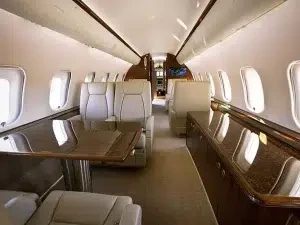
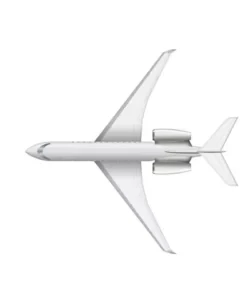

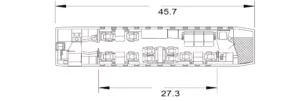
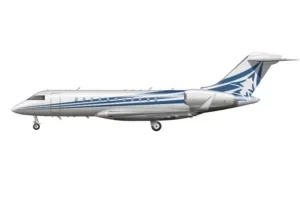

GULFSTREAM G400
Discover the GULFSTREAM G400
The Gulfstream 400 was introduced in 2002 as part of Gulfstream’s transformation of their product line. Technically speaking, the G400 is a G IV SP. The G400 comes with a high level of standard cabin and avionics features, that the only options are a head-up display, security system, and a local area network (LAN) for the cabin.
The G400 production was initiated just after the 500th G IV model was produced and ceased in 2004 when it was succeeded by the G450.
Passengers: 14
Range: 3,880 nautical miles
Cabin Dimensions: 2,041 cubic feet
Speed: 476 MPH
Cargo Capacity: 169 cubic feet


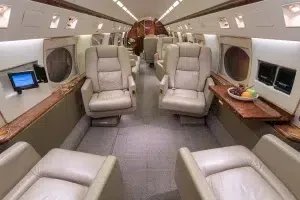
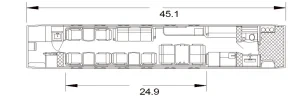

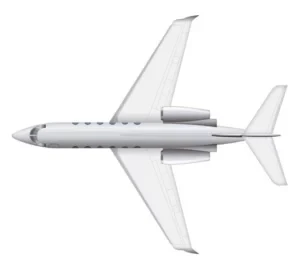



GULFSTREAM G500
Discover the GULFSTREAM G500
The Gulfstream 500 is essentially a GV but it shares certain improvements with the G550 (formerly unofficially known as the G VSP).
In 1997, Gulfstream introduced a new era in the history of business aviation with the Gulfstream GV, the world’s first ultra-long range business jet. The Gulfstream 500 was introduced in 2002 as part of Gulfstream’s transformation of their product line.
The G500 is powered by two Rolls-Royce BR710 turbofan engines and is able to travel non-stop for 5,800 nautical miles with speeds up to Mach 0.885. The cabin is a GIV cabin that has been stretched five feet to make room for a crew rest area. The avionics suite is Honeywell’s PlaneView cockpit, an outgrowth of their Primus Epic architecture. Both the G500 and G550 have improvements in aerodynamics leading to reduced fuel burns compared to the GV. Only the G550 gets the head-up display and enhanced vision system as standard, while it is an option for the G500. The G500 comes with a choice of several standard cabin layouts, has slightly different weights, less range, and a lower base price compared to the G550.
The G500 entered production in 2003.
Passengers: 14
Range: 5,620 nautical miles
Cabin Dimensions: 2,268 cubic feet
Speed: 477 MPH
Cargo Capacity: 226 cubic feet
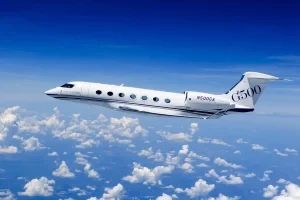




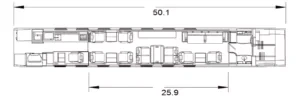
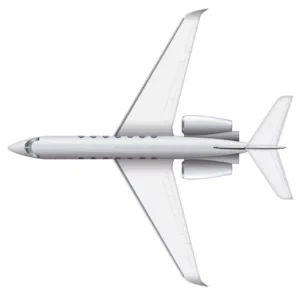

GULFSTREAM GIV SP
Discover the GULFSTREAM GIV SP
Work on the Gulfstream GIV began in 1983. The Gulfstream GIV was introduced and made its first flight in 1985. It entered service in 1987. The biggest differences from the GIII are FAR 36 Stage 3 compliant Rolls Royce Tay 611-8 engine, a four foot longer cabin, and 340 nautical miles extra range.
The GIV SP version entered service in 1993 and has 1,400 pounds more take off weight, 7,500 pounds more landing weight, a redesigned fuselage that allows one inch more headroom, and some minor system changes.
Passengers: 14
Range: 3,880 nautical miles
Cabin Dimensions: 2,041 cubic feet
Speed: 476 MPH
Cargo Capacity: 169 cubic feet
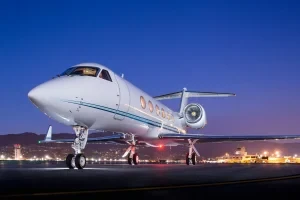
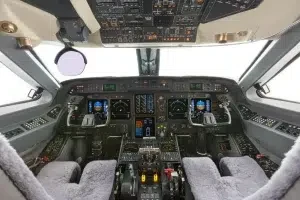
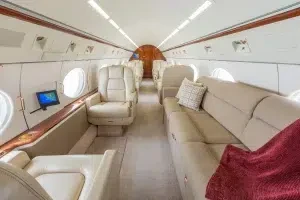



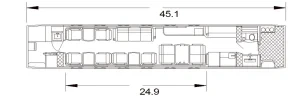

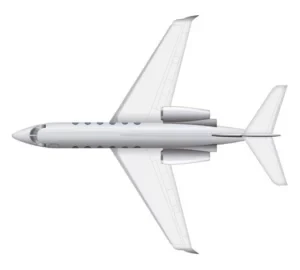


GULFSTREAM GV
Discover the GULFSTREAM GV
In 1997, Gulfstream introduced a new era in the history of business aviation with the Gulfstream V, the world’s first ultra-long range business jet. The GV is the first civil aviation aircraft to be equipped with the FAA certified Gulfstream Enhanced Vision System (EVS). The GV is powered by two Rolls-Royce BR710 turbofan engines and is able to travel non-stop for 6,500 nautical miles with speeds up to Mach 0.885. The cabin is a GIV cabin that has been stretched five feet to make room for a crew rest area.
Passengers: 14
Range: 6,250 nautical miles
Cabin Dimensions: 2,268 cubic feet
Speed: 488 MPH
Cargo Capacity: 226 cubic feet

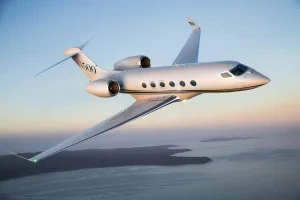
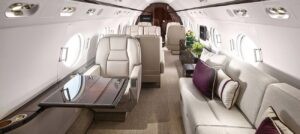

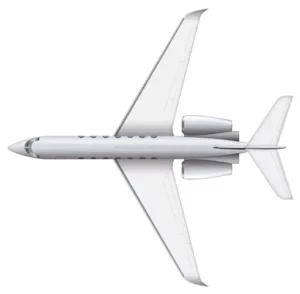



Simply Unmatched
Dominican Republic's Finest Upscale Property Collection.

Simply Worry-Free
Safe and secure booking, and 24/7 customer support.

Simply Unforgettable
Crafting Timeless Memories: Impeccable Stays, Every Time.
Need More Information?
Ascend To Unprecedented Travel Experiences. Reach Out Now For Your Personalized Jet Charter Details!
Contact Us Now!

